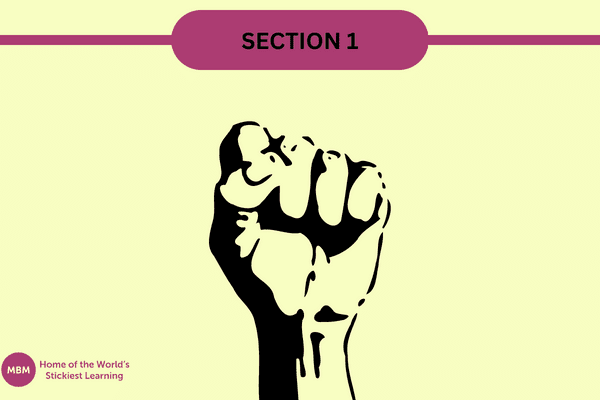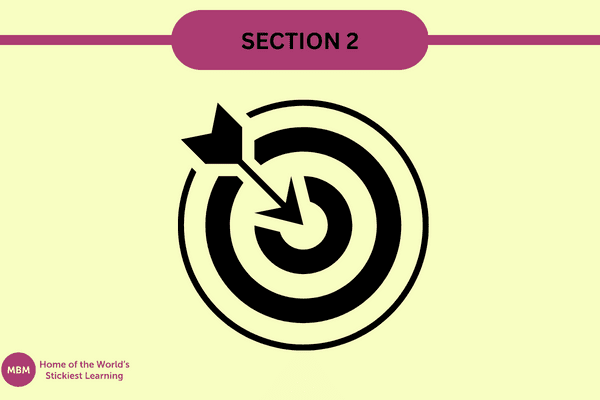Get Behind the Buzzwords, and Reap the Benefits
Empowerment training seems, on the face of it, something any self-respecting company would want to provide for its staff. Giving people autonomy and confidence in doing their jobs can only be a good thing, surely.
But when businesses are under pressure, what are the chances of employers taking away people’s empowerment and accompanying sense of self-actualisation and fulfilment? If individual employees fall short, is their empowerment a privilege they could lose? Will things go back to how they were?
The answer is, it all depends on what kind of empowerment training you give people, your sincerity, and how much you commit to supporting them.
What Does Empowerment Training Mean?
A formal definition of empowerment training is, ‘ET’ provides sustainable opportunities for employees, in accordance with their aspirations and talents, to acquire knowledge and skills and apply them in a favourable work environment, to achieve individual and organisational performance. A distinctly less formal definition is, empowerment training aims to help an individual or a team develop to their highest potential – achieve clarity, focus, alignment, communication, purpose, and results.

What’s Involved in Empowerment Training?
Global employee recognition solutions provider OC Tanner suggests that training people to be empowered is about implementing strategies to make them proactive and inspiring them to thrive. Some sceptics suspect empowerment training is an underhand way for companies to squeeze more out of their employees. They might be reassured about OC Tanner’s sympathy for the world’s workers, and take note of their empowerment training strategies, knowing OCT’s website quotes company surveys where only half the employees trust their bosses. Such findings confirm the need for sincerity and commitment.
OC Tanner suggests 10 steps businesses can adopt in empowerment training:
- Delegate work and responsibility.
- Set clear boundaries and expectations.
- Give your team the resources they need.
- Be flexible.
- Focus on the end results, not the process.
- Include team members in projects.
- Be open to individual input and ideas for innovation.
- Provide cross-training and learning opportunities.
- Recognise individual achievement.
- Be consistent in allowing empowerment.
We’ll look at these steps in more detail later. For now, bear in mind that these steps aren’t exactly ‘training’ as in formal coaching, or instructing in a task. The process is likely to be closer to consultation. But an element of coaching and instruction might be needed to get things in motion.
What Are the 3 Main Objectives of Empowerment?

Dr Beth Cabrera, an organisational psychologist, wrote in 2012 that these are:
Clarity:
The first step in empowering employees is to clarify your goals and expectations. People can only progress at work if they know what’s expected of them. With empowerment, the manager’s role shifts from closely supervising people’s work to holding them accountable for results.
Support:
The second step in empowering people is to support them by providing the resources they need to succeed and removing any obstacles that may hinder progress.
Autonomy:
Empowering people means giving them the autonomy they need to do their work. Once they know what’s expected, and have the support to do it, the best thing the boss can do is leave them to get on with it.
This list could be interpreted as suggesting that employers will benefit more from the empowerment training than the employees. But for the employees, it’s still a step away from old-school autocratic and task-oriented leadership.
What Actually is Empowerment? Different People Have Different Ideas

Here are some different interpretations. Software selection and recommendation website appviser.co.uk says empowerment is “a management practice of sharing information, rewards, and power with employees, putting them at the heart of the organisation and giving them autonomy.” So far, that sounds a lot like participative management, with leaders actively involving the team in decision-making. The rewards part sounds attractive enough, but how different is this from old-school authoritative, task-based leadership with set rewards for completing set objectives and consequences for failing?
In another interpretation, 4 Corner Resources, a recruitment agency in Orlando, Florida, makes empowerment sound like democratic leadership. Or if the employees can be trusted and the level of delegation goes further, laissez-faire leadership. 4 Corner says empowerment means enabling employees to take ownership of their work and contribute to meaningful decision-making. In a culture of empowerment, they continue, company leaders delegate responsibilities, share information freely, and seek out input from members of their team, as they do in managing team projects.
The business studies website tutor2u.net might be accused of unrealistically getting their students’ hopes up falsely about working life in the real world. They say empowerment means giving teams a high degree of autonomy, letting them plan their work, take their own decisions, and solve their own problems. But Tutor2u have their feet firmly on the ground in saying that empowered teams are set targets to achieve and may receive rewards for doing so. But again, isn’t that taking us back to task-based leadership, and its carrots and sticks?
That said, in tutor2u’s interpretation, empowered teams motivate by allowing people the opportunity to meet some of their ‘higher needs,’ as identified in Maslow’s or Herzberg’s motivation theories. This ties in with what we were saying earlier, about empowerment and self-actualisation.
What Does Empowerment Training Look Like? Here’s a Step-by-step Guide
As we mentioned previously, OC Tanner suggests 10 steps businesses can adopt in their empowerment training. There’s a lot here to take in, so let’s start by looking at the first 5. These steps don’t necessarily call for formal coaching sessions, but it’ll probably need an element of coaching to get things in motion. As we’ll see in a moment, successful empowerment training comes down to ‘Show, don’t tell,’ for effective communication.

The First Five Steps of Empowerment Training:
1. Delegate Work and Responsibility:
Delegation and empowerment in the workplace go hand in hand. SHOW, DON’T TELL: When team members understand the tasks they’re responsible for, they’re more likely to take ownership. You need to manage people less because you’ve shown that you trust their ability to get the job done. And hence, you’ve empowered them.
2. Set Clear Boundaries and Expectations:
Empowering employees can feel like you’re giving them free rein to do whatever they want. But that needn’t be the reality. You can still retain control. SHOW, DON’T TELL: Clearly set out and define the results you expect. Your team might complain and say that sounds like old-school authoritative leadership, but you’ll be sure their work meets your standards.
3. Give Your Team the Resources They Need:
SHOW, DON’T TELL: Provide the tools for the job, and show them how to use them. Not only that, positively encourage open communication and let the team know you’re available for brainstorming sessions and one-to-one chats. A key part of people-oriented leadership, empowering people like this makes a real difference. That’s especially true when times are tough, you’re on a tight deadline, or you’re implementing new ways of working, and you’re having to be more authoritative than you’d like to be. Make sure they know you’re still there for them.
4. Be Flexible:
After delegating the work and establishing ground rules, you can start cultivating a more relaxed, casual workplace. SHOW, DON’T TELL: If people need to work from home or require more flexible working arrangements, work with them to accommodate their needs. Your people will realise you see them as humans with real lives outside work, and be less likely to feel you’re micromanaging them and nitpicking. We talk more about this in our article on people-oriented leadership.
5. Focus on the End Results, Not the Process:
We mentioned micromanaging just now. That’s deadly if you want to train people to feel empowered. SHOW, DON’T TELL: You’ve set the guidelines, now let your team choose how to work within them. This will empower your people to work in an ideal way for them as individuals, rather than worker bees following an impersonal process. Going back to people-oriented leadership, remember it’s the end results that matter, more than how you achieve them.
A Pause for Breath. Why is ‘Show, Don’t Tell’ So Important in Empowerment Training?

So far, we’ve looked at 5 out of the 10 steps in empowerment training that OC Tanner suggests. There are 5 more to come. If this is a lot to take in, bear in mind it can be a big task for employees to take empowerment on board. Hence the need for training.
The phrase ‘show, don’t tell’ bears out how important effective two-way communication is in empowering people by adopting these working practices. When you consider the different aspects of ‘ET’ we’re looking at, you need to think about how they interrelate with the other soft skills you draw on in your work. Let’s go on with the list:
6. Include Team Members in Projects:
People who have a sense of belonging are five times more likely to feel empowered to give their best performance, says OC Tanner. SHOW, DON’T TELL: Involving people in projects makes them feel appreciated and know their input is valued. Projects also make team members’ work more interesting by getting them away from their usual roles, working with new colleagues and being exposed to new ideas. They’re great for developing people, and bringing out their leadership skills. OC Tanner’s research shows participants in projects are 70% more likely to feel their job is preparing them for their future careers. Projects are also good for employee retention because they make people more likely to want to stay with the company. Read our article on managing team projects.
7. Be Open to Input and Innovation:
Give team members the freedom to explore their work, and you’ll be surprised by the insights they gain, and importantly, bring to the table. SHOW, DON’T TELL: Encourage people to be open with ideas for problem-solving, including methods, processes, and solutions. As work teams become more diverse, this presents major benefits. People bring fresh thinking and different perspectives to innovation and creativity. Read our article about problem-solving.
8. Provide Cross-training and Learning Opportunities:
People want to feel they’re moving forward in their careers. Encourage them to branch out and take an active interest in other roles and departments. This enables them to develop and hone their skills and gives you team members with a set of different talents, who are keen to use them in their work. Read our article on developing people.
9. Recognise Achievement:
Show sincere appreciation for ‘above-and-beyond’ work, and your employees will repay you by repeating, or even improving their performance. They’ll also feel empowered because you reward them for achievements accomplished without needing excessive supervision. This comes back to people-oriented leadership.
10. Be Consistent:
Remember, you’re dealing with human beings. Empowerment isn’t a privilege you should give or take away on a whim. You might feel you need to make a few adjustments, and that’s fine, but your employees won’t feel truly empowered if they know their autonomy could be revoked at any moment. And while you should obviously reward exceptional performance, everyone should enjoy the same basic privileges, to maintain a sense of unity and inclusivity in the workplace.
Guidance to Go. Here Are Some Empowerment Training Tips to Take Away

8 top tips to energise empowerment training:
- Delegate to develop.
- Set clear expectations.
- Give employees autonomy over assignments.
- Provide necessary resources.
- Give constructive feedback.
- Accept ideas and input.
- Communicate the company vision of the organisation.
- Recognise employees for hard work.
Even the smallest company can do this:
- Build a culture of trust and openness.
- Be honest with people.
- Show empathy.
- Foster open communication.
- Be purpose driven.
- Share tasks and responsibilities.
- Provide growth opportunities.
Bigger businesses can do more of this:
- Involve employees in company decisions.
- Provide training courses for managers.
- Establish employee recognition awards.
- Allow autonomy in decision-making.
- Prioritise communication in the hierarchy.
- Offer flexible working hours.
- Create “WOW” moments.
How Can You Tell the Training Worked and the Team Feels Empowered?
- People are more engaged: Work is seen as interesting, dynamic, and exciting.
- There’s a trust-based culture: Greater trust between leaders and team members.
- Reduced stress and burnout: Increased sense of safety about taking risks and making mistakes.
- Better performance: Higher levels of motivation and productivity.
- Improved work environment: Positive and purpose-driven culture.
- Greater job satisfaction: People find work fulfilling, challenging, and meaningful.
- More employee development: There’s ample opportunity for personal and professional growth.
And Finally: Don’t Take This Personally, but…

You shouldn’t confuse the empowerment training we’ve been talking about with empowerment coaches and personal empowerment trainers. They’re fine if you need help identifying your limiting beliefs and preconceived notions which are stopping you from achieving your life goals. Personal empowerment is about taking control of your life and making positive decisions. It’s closely linked to attributes like self-esteem and self-confidence. But what we’re talking about here is empowerment in work.
If you want to be an empowering leader, it’s important to remind the people around you of the vision you share and take time to share the overall goal and each team member’s value in achieving it. This allows your colleagues to understand their role’s importance and motivates them to bring their best selves to work.
And finally, stay humble. Remember, employee empowerment is ultimately about showing appreciation and recognition for your workers. Individually thanking your team members for their work has a huge impact on how they feel. They know you don’t take them for granted, and you value their work. And that will make them feel more empowered than anything.
Enjoyed this article? Maybe you’ll enjoy our YouTube videos.
Action: For even more useful content on team building, check out our ultimate guide on Team Building Skills.




